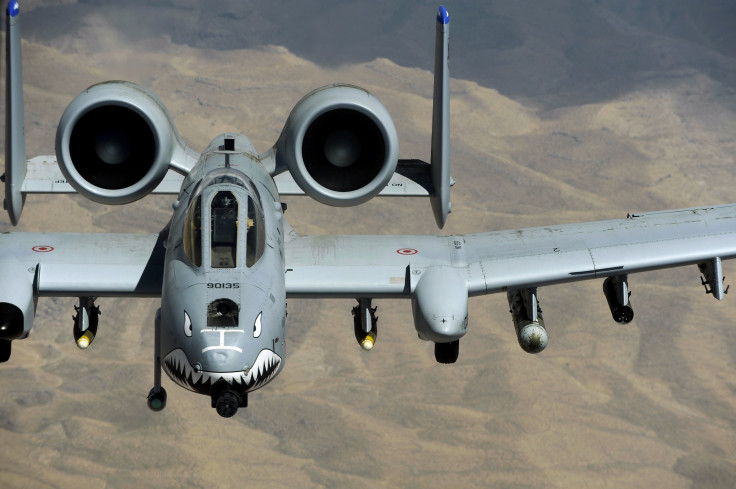Boeing Touts The A-10 Thunderbolt For Sale In Mideast As Ideal Warplane To Fight ISIS

The A-10 Thunderbolt, a relic of the Cold War that's been flying for the U.S. Air Force since the 1970s and has narrowly escaped retirement as the Pentagon cuts its spending growth, could be about to find itself in demand once again, more than three decades after the final aircraft came off the production line.
An unexpected appearance by the brutish-looking aircraft at the glitzy Paris Air Show this week showcased the return to the spotlight of the Warthog, as it's universally known by its crews. Not only has the A-10 found a new lease on life fighting Islamic State group militants in Iraq and Syria, and being deployed to its old hunting grounds in Eastern Europe to deter Russian hostility -- it's now being touted by Boeing as a great aircraft for customers in the Middle East, who would get modernized airplanes dismissed by the U.S. Air Force, which has about 300 left in service.
Any deal, however, will only happen if the aircraft is retired under proposed plans by the Air Force, according to Paul Cejas, chief engineer for off-Boeing programs in the company's support division, who said that the idea to sell the A-10 to new customers “is fairly new and not at a point where we can provide more details." Only the United States has ever operated the plane, a slow and ungainly but heavily armed jet that excels at destroying armored targets on the ground. It was made to hunt Soviet tanks in Europe, a role it never performed in real life, finding instead a new job as a specialized platform for supporting troops on the ground in close combat.
Boeing, which took over from the original manufacturer, Fairchild Republic, which went out of business in the 1980s, is currently fulfilling a contract to provide 173 sets of new wings to the remaining A-10 fleet. So far, it has delivered 105 sets and doesn't expect the remnant to be canceled even if the Air Force retires the aircraft or reduces the fleet size. According to Aviation Week, the new wings will return many of the A-10s to so-called "zero-time condition," meaning they are like new.
Cejas also says that fitting the aircraft with a new engine was also on the agenda, as the current one has not changed since the 1970s. Boeing has a number in the same thrust class available. Other upgrades could include a new targeting pod and a helmet-mounted display system.
Talks of an upgrade are a far cry from the debate in Congress around the A-10 that was happening in recent years; the jet was almost retired, and only the political weight of supporters like Senate Armed Services Committee chairman John McCain and fellow Republican Sen. Kelly Ayotte managed to save it. The aircraft has so far survived budget cuts due to the so-called sequestration process; the Air Force has proposed several times to cut it, beginning in 2012, to save an expected $4 billion over five years and help pay for the new F-35.
Air Force chiefs contend that the incoming F-35 would be able to perform the same close-air-support role as the A-10, and that they needed to divert maintainers from the A-10 to F-35 sooner than later in order to familiarize them with the new systems. So far Congress has not seen it the same way, and in negotiations for the 2016 defense budget it appears that the current fleet of Warthogs will be kept fully intact.
Plus, recent deployments to Syria and Iraq to fight the Islamic State group have strengthened the case for keeping the aircraft. Its ability to fly at low altitude and pick off very specific targets has been key when hitting militants fighting in semi-urban areas. High-flying fighter jets are not capable of the same response to shifting conditions on the ground or accuracy at close range, according to A-10 supporters. That may be the core of the sales pitch that Boeing could make to potential new clients.
Billed as a “low-cost counterterrorism” system, the modernized A-10 is clearly being aimed at Middle Eastern customers, who are likely to be interested in such an aircraft given the rise of ISIS in the region. The United Arab Emirates and Saudi Arabia may be two of the likely buyers, according to industry sources that cite Boeing’s close relationship with both.
In addition, and bringing the aircraft full circle to its Cold War roots, it is has been deployed to Romania and Germany in an attempt to deter Russian hostility in Eastern Europe.
© Copyright IBTimes 2024. All rights reserved.






















